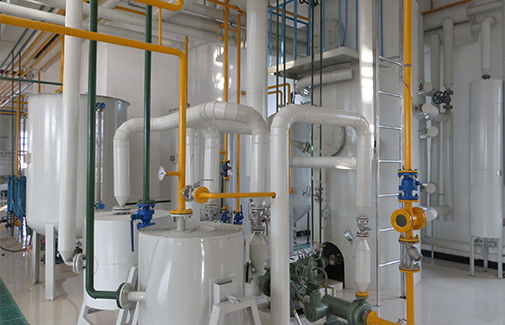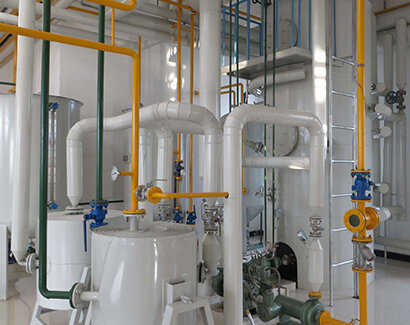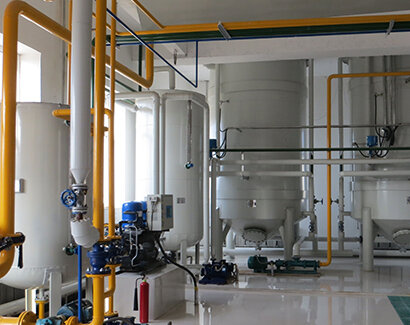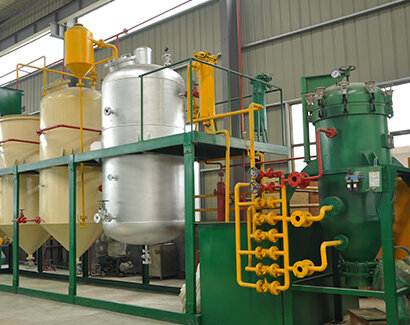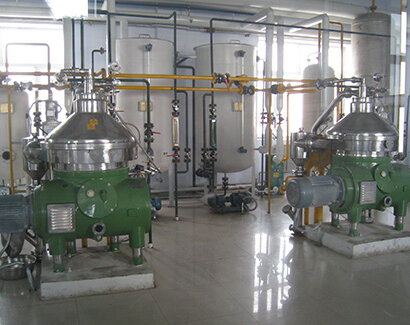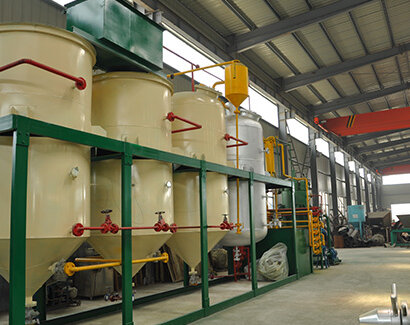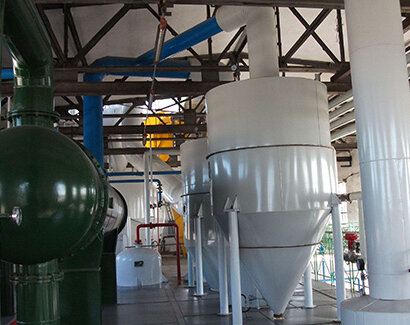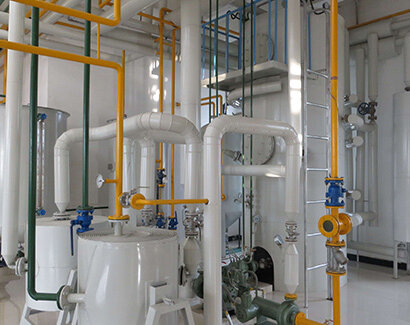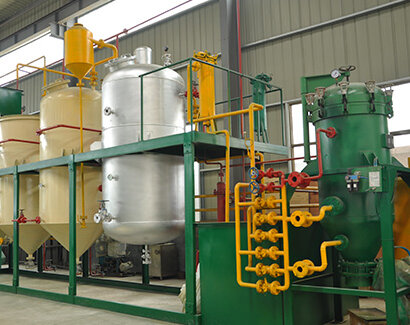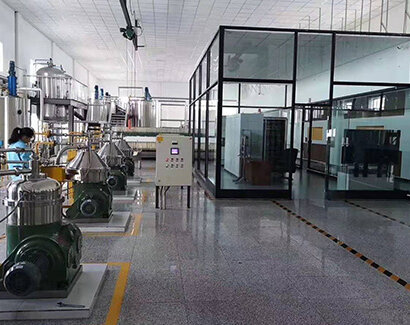The main process of palm oil refining process is: crude oil – degumming – neutralization – decolorization – deodorization – fractionation. Adding water for hydration and degumming process, adding alkali for neutralization process or steam distillation for deacidification process, adding adsorbent activated clay or activated carbon for decolorization process, use high temperature and negative pressure to deodorize, and simultaneously remove low-boiling volatile that produce oil fumes.
Dingsheng Machine provides palm oil refining solutions, batch refining (1-30 tons per day), continuous refining process, semi-continuous refining process, small palm oil refining production line equipment for degumming, deacidification, decolorization, deodorization and fractionation.
1, Crude palm oil filtration process
The purchased crude oil needs to be filtered to remove suspended particles and other impurities before the following production can be carried out.
2, Palm oil refining and degumming process
Main process flow:
crude oil → heat exchanger → (add acid) mixer → reaction tank → (add alkali) mixer → centrifuge → (add water) mixer → reaction tank → centrifuge → refined oil.
Degumming process uses physical or chemical methods to remove peptized impurities in crude palm oil. Phosphoric acid is added to the crude oil when crude oil is heated to 90-105 ℃ and stirred fiercely for about 3 minutes, then part of the phosphoric acid is neutralized with dilute alkali, after all the oil is separated by a centrifuge,then add hot water, the centrifuge with extremely high gravitational acceleration.
3, Palm oil refining neutralization process
Deacidification of free fatty acids affects the stability and flavor of palm oil, and neutralization process with alkali can be used to remove free fatty acids, which is called deacidification, also known as alkali refining.
There are usually two methods for neutralization, physical and chemical methods. In principle, the physical refining method, that is, the air stripping distillation deacidification method, should be the preferred process for oil refining. The chemical neutralization method is to neutralize the free fatty acids in crude oil with sodium hydroxide, then produces soapstock and wastewater. However, the choice of physical refining or chemical refining mainly depends on the quality of crude oil.
4, Palm oil decolorization process
Decolorization is one of the very important processes in the oil refining process. In addition to removing the pigment in the oil, it can also reduce the content of phospholipids, peroxide value, soap content and metal ion content, thereby improving the color of the oil, flavor and oxidation stability, providing good conditions for further refined hydrogenation and deodorization of oils and fats.
At present, the most commonly used method for oil decolorization is activated clay adsorption decolorization method, which uses clay, a substance with strong selective adsorption, to remove pigments dissolved in oil or pigment disperses in oil with colloidal particles and other impurities under certain conditions.
5, Palm oil deodorization process
In the oil deodorization process, in addition to the purpose of deodorization, now more emphasis is being placed on achieving unit operations at low temperature and in a short time, suppressing the production of trans fatty acids, reducing the loss of tocopherol, reducing polymerization, and reducing vitamin (A , D, E) decomposition. Utilize the principle of vacuum air extraction to remove low-molecular odor substances, free fatty acids, monoglycerides, glycolipids, sulfides, thermal decomposition products of pigments, etc. in oil. In order to prevent oxidation, it must go through degassing before entering the tower, direct steam is to improve the effect of deodorization. Recovery of thermal energy can be achieved by heat exchange between cold oil and hot oil.
6, Palm oil fractionation process
Palm oil fractionation process refers to separate palm oil into low melting point liquid phase (olein) and high melting point solid phase (stearin) by controlling the cooling and crystallization process of palm oil. Palm oil fractionation process separates palm oil into three components: stearin, olein, and the middle fraction.

